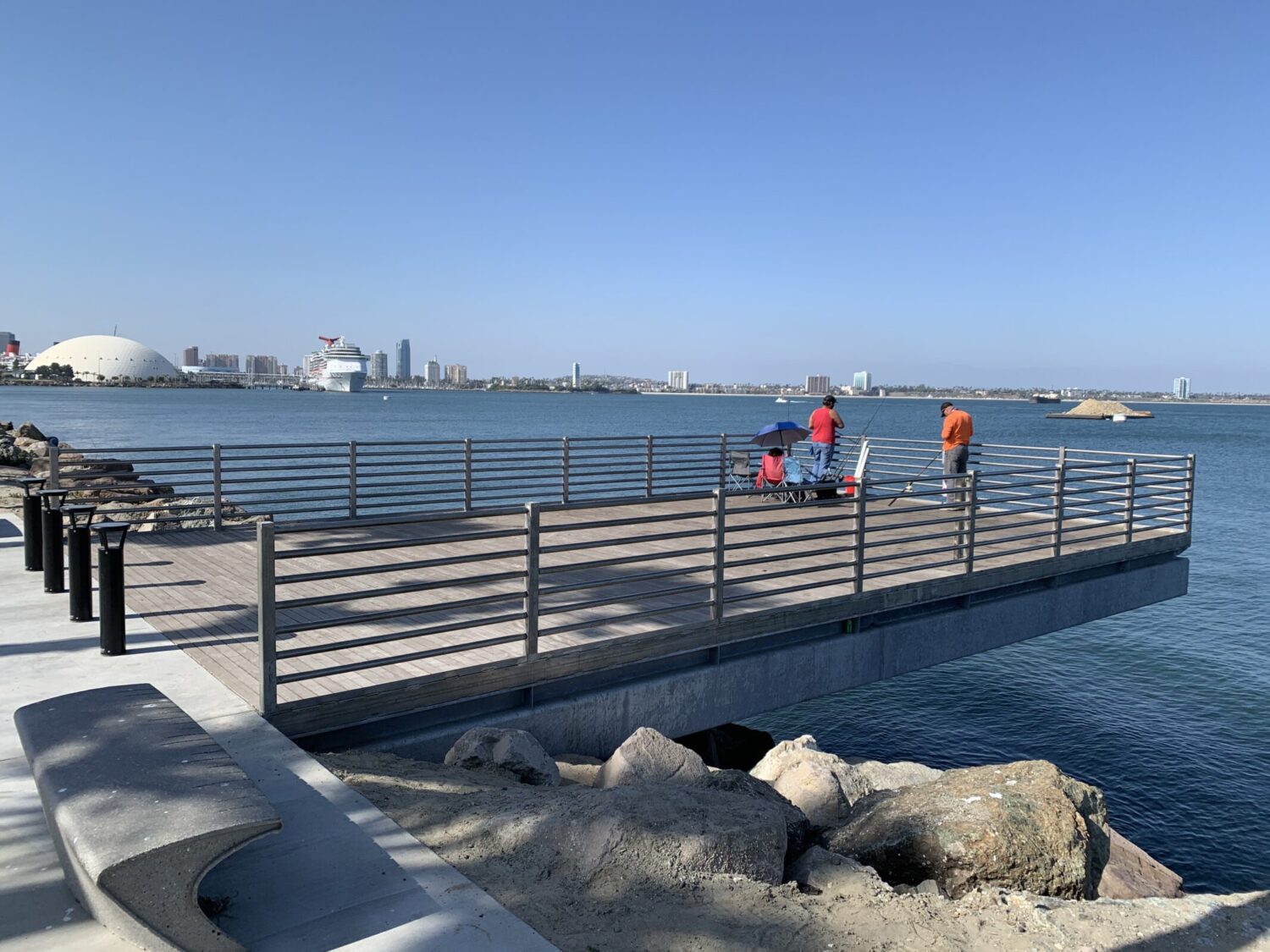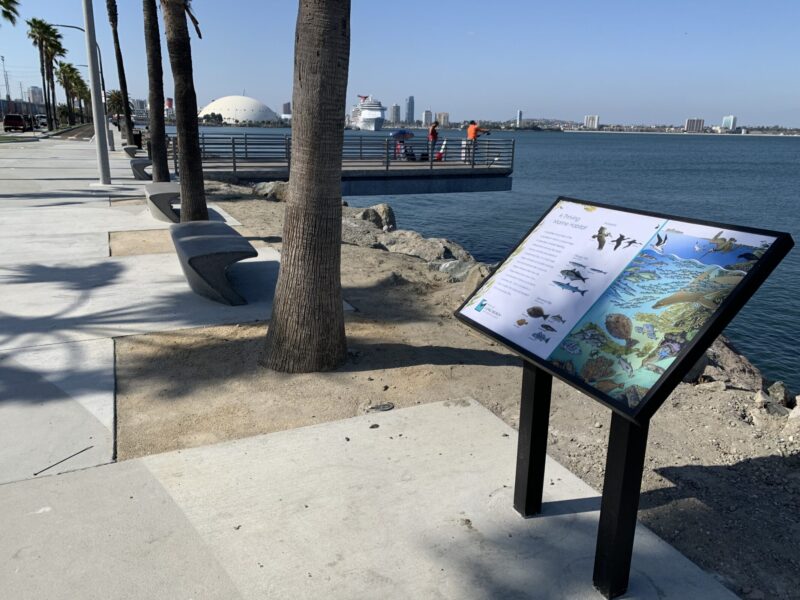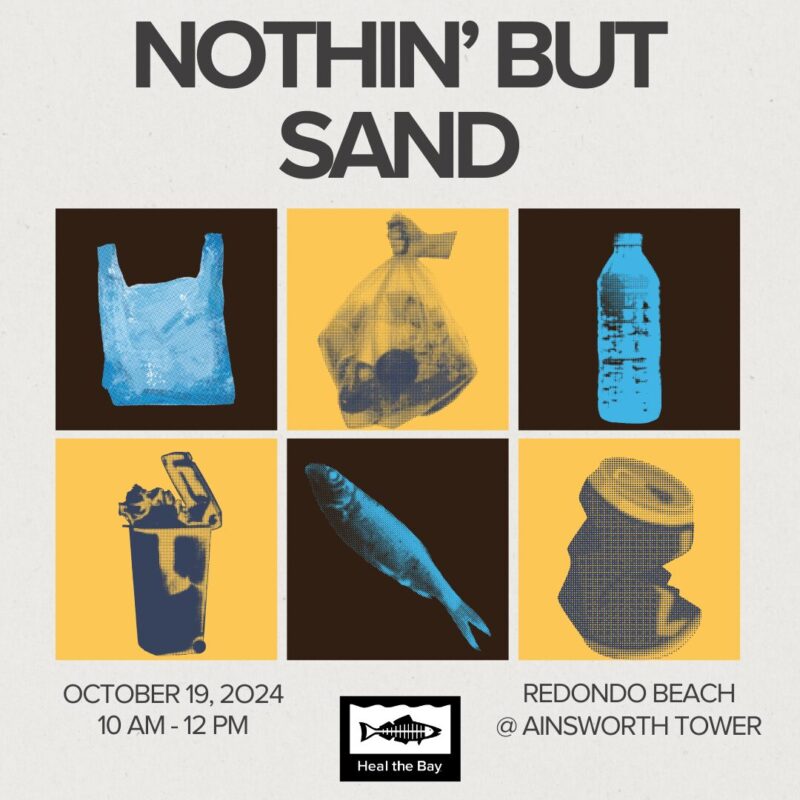Fishing at Long Beach’s Pier J

There are new spots for fishing at Pier J in Long Beach. Here’s what anglers need to know about fishing in the red zone.
The pandemic has brought many changes to our lives, and Pier J is no exception. This beautiful spot has a spectacular view of the Long Beach marina, and now features new infrastructure from which to enjoy fishing. Historically, “Pier J” was not an actual pier, it was just a rocky area where anglers were required to have a license to fish.
In a recent visit I made to this pier, I was surprised to see the changes that the Pier J area has undergone, making it even more inviting for people to visit, fish, or simply enjoy the scenery. Pier J now has two actual piers located along the rocky area. The first pier is just below the Cruise line Terminal and has benches, restrooms, parking, and a water fountain for people and pets. Moving a little further south, the second pier also has benches, bathrooms and parking, including amenities for people with disabilities.
Photos by Frankie Orrala. May 7, 2021
In addition, Pier J also has educational signs throughout the area about the complex interactions of marine animals and plants in Queensway Bay (home of the Queen Mary and the Aquarium of the Pacific), as well as the 5 fish that people should not eat. These 5 fish (white croaker, barred sand bass, black croaker, topsmelt, and barracuda) caught at Pier J are within the red zone and should not be consumed due to their high levels of toxic chemicals.
These toxic chemicals are mostly found in the skin and fatty tissues of fish. To reduce exposure to these chemicals, it is recommended to only eat the fillet of “safe-to-eat” fish species that are not on the list of the most contaminated.
According to the anglers at this pier, Pier J reopened its fishing activities in February. Like Rainbow Harbor Pier described in my blog last month, Pier J is also very close to the mouth of the Los Angeles River, making it an area of water quality concern for those who enjoy fishing on these piers. Heal the Bay’s Angler Outreach Program will resume activities in June, after a long hiatus due to COVID-19, and we are thrilled to be back educating Southern California pier anglers in-person about the potential effects of eating contaminated fish and how to stay healthy.
Heal the Bay’s Angler Outreach Program (AOP) is part of the Fish Contamination Education Collaborative (FCEC), a public outreach and education component of the Palos Verdes Shelf Superfund program run by Environmental Protection Agency (EPA). The FCEC and AOP provide information on which fish should be avoided and which are safe to eat. Over the last 18 years, our Angler Outreach team members have talked with thousands of anglers (often in multiple languages) about the risks of consuming contaminated fish, what fish are safe to eat, and what cooking methods are safest. We also share other relevant information including maps showing the red zone, an area where toxic waste like DDT and PCBs, chemicals historically found in pesticides, were discharged through the sewer system and remain in sediment. Although DDT and PCBs are no longer used, their impacts can still be felt today; consuming DDT or PCB-contaminated fish can result in chronic health problems and the consumption of white croaker, barred sand bass, black croaker, topsmelt, and barracuda should be avoided.
To learn more, visit www.pvsfish.org.






